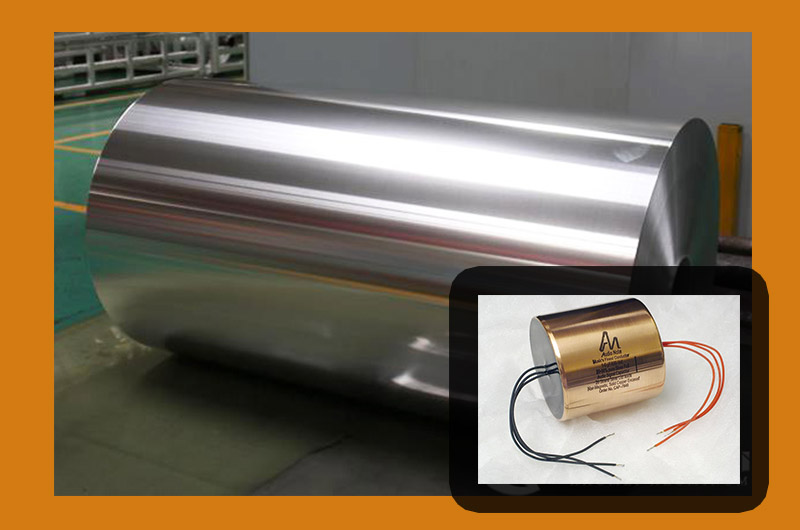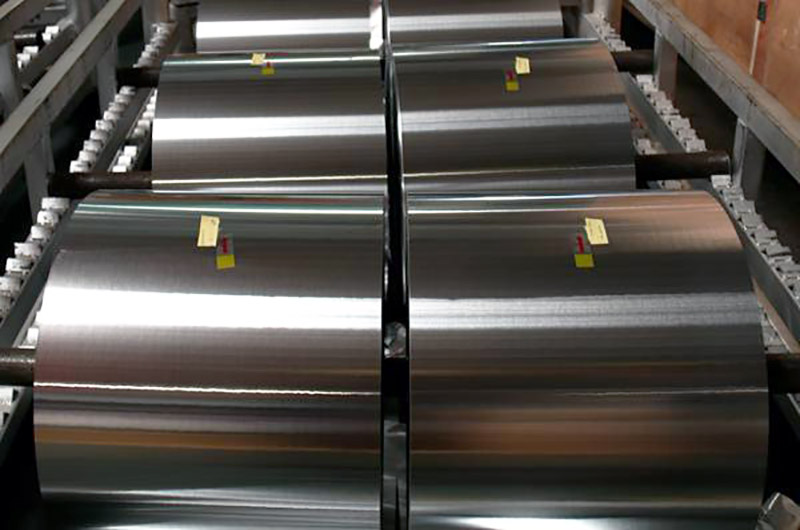- Type of Electronic Aluminum Foil
- Electronic Aluminum Foil Specifications
- How is Electronic Aluminum Foil Made?
- Applications of Electronic Aluminum Foil
Electronic aluminum foil is a key raw material for aluminum electrolytic capacitors, widely used in household appliances, computers, communication equipment, industrial control, electric vehicles, electric locomotives, and military aerospace equipment.
- Electronic aluminum foil: The core material for manufacturing aluminum electrolytic capacitors.
- Electrode foil: Includes etched foil and activated foil, used to enhance capacitor performance.
The production process and material requirements of electronic aluminum foil ensure its excellent electrochemical performance and reliable service life, making it a critical component of aluminum electrolytic capacitors.

Type of Electronic Aluminum Foil
- Cathode foil: Thickness ranges from 0.015mm to 0.06mm, used for the cathode part of capacitors.
- High voltage foil: Thickness ranges from 0.065mm to 0.1mm, suitable for high voltage applications.
- Low voltage foil: Thickness ranges from 0.06mm to 0.1mm, suitable for low voltage applications.
1. High Voltage Foil
High-Quality High Voltage Anode Foil
Premium High Voltage Anode Foil
- Characteristics: High purity, cubic texture, thin surface oxide film.
- Aluminum Purity: Greater than 99.99%
- Cubic Texture: 96%
- Vacuum Heat Treatment Conditions: 10^-3Pa to 10^-5Pa
- Advantages: High quality
- Disadvantages: High cost
Ordinary High Voltage Anode Foil
- Characteristics: Economical and practical.
- Aluminum Purity: Greater than 99.98%
- Cubic Texture: Greater than 92%
- Vacuum Heat Treatment Conditions: 10^-1Pa to 10^-2Pa
- Advantages: Lower cost
- Disadvantages: Lower cubic texture and purity
2. Low Voltage Foil
- Characteristics: Used for low voltage capacitors.
- Applications: Mainly used in low voltage applications with less demanding requirements.
3. Cathode Foil
Cathode foil can be divided into soft cathode foil and hard cathode foil.
Soft Cathode Foil
- Characteristics: High aluminum purity, copper-free.
- Aluminum Purity: Greater than 99.85%
- Manufacturing Method: Typically produced by electrochemical etching.
- Advantages: High quality
- Disadvantages: Higher cost
Hard Cathode Foil
- Characteristics: Lower purity, contains copper.
- Manufacturing Method: Often produced by chemical etching.
- Advantages: Lower cost
- Disadvantages: Lower quality

Electronic Aluminum Foil Specifications
| Typical alloy | 3003, 1070, 1100A |
|---|---|
| Temper | H18 |
| Thickness (mm) | 0.015-0.2 |
| Width (mm) | 100-1600 |
| Length (mm) | Coil |
| Treatment | mill finish |
| Standard | ISO SGS ASTM ENAW |
| Packaging | Standard seaworthy export packaging. Wooden pallets with plastic protection for the coil and sheet. |
How is Electronic Aluminum Foil Made?
Electronic aluminum foil is a refined product made from high-purity aluminum foil. It starts with hot-rolled refined aluminum (high-purity aluminum) which is then formed into aluminum sheets and subjected to cold rolling and annealing processes.
1. Production Stages: Melting - Homogenization - Hot Rolling - Pre-Annealing - Cold Rolling - Intermediate Annealing - Cold Rolling - Final Rolling - Slitting - Performance Testing - Packaging
2. Etching and Electrification Stage: First, the raw aluminum foil is etched to increase the surface area of the cathode and anode foils, forming etched foil. Then, on the anode foil side, an oxide film (AL2O3) is formed on the surface through penetration, which serves as the dielectric material, forming the foil.
| Raw Material | Process 1 | Process 2 | Finished Product | Application |
| Electronic Aluminum Foil | Etching Process | Increasing the Surface Area of Aluminum Foil | Etched Foil | Aluminum Electrolytic Capacitors |
| Anode Aluminum Foil | ||||
| Electronic Aluminum Foil | Activation Process | Formation of Oxide Film | Activated Foil | Aluminum Electrolytic Capacitors |
| Anode Aluminum Foil |
Applications of Electronic Aluminum Foil
Electronic aluminum foil is primarily used in the production of electrical and electronic capacitors. It is widely used in various electronic devices, such as radios, televisions, telephones, computers, microwave ovens, electric welders, magnetic motors, electronic testing equipment, copiers, air conditioners, automobiles, fluorescent lights, mercury vapor lamps, transmission equipment, motors, and control units.
Depending on the materials, capacitors are mainly classified into aluminum electrolytic capacitors, ceramic capacitors, and film capacitors. Among these, aluminum electrolytic capacitors are the most widely used type of electronic capacitor.



